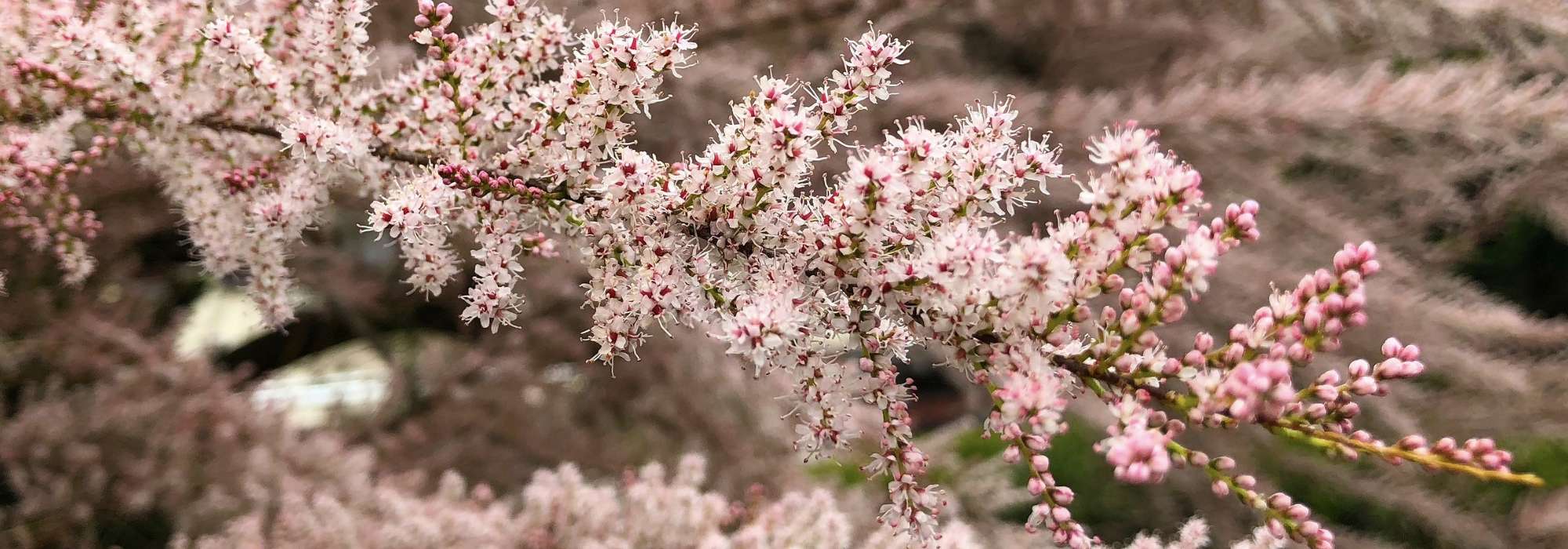
Tamarisk: planting, pruning and care
Contents
Tamarisk, in a nutshell
- Tamarisks are small trees with a rounded habit and a nodose trunk bearing thin, scaly twigs.
- They are frequently planted on the coast as they are adapted to saline soils.
- Feathery flowering consists of tiny white to pale pink or purple flowers that cover the foliage, either in spring before leafing or in late summer.
- They are generally hardy and undemanding trees with slow growth, used as windbreaks or as small shade and ornamental trees in deep, rather sandy soils, including dry, poor and salt-laden ones.
A word from our expert
Like palm trees, tamarisks are small trees often planted along beaches, on seaside promenades and along wild dunes both for their appearance and their robustness against wind, sea spray, drought and even cold.
These trees, seldom exceeding 3–6 m, have a short, dark, gnarled trunk, often forming coppice shoots, shaped by wind and repeated pruning, and dense, weeping or hirsute branches bearing fine arched twigs. The grey‑green foliage, scaly in appearance, is clad in bright pink (Pink Cascade), white (Hulsdonk White) or red (Rubra) in summer on Tamarix ramosissima, while spring tamarisks, T. parviflora and T. tetrandra, produce a delicate to dusky pink flowering before the leaves, in May–June.
Most species are deciduous and their foliage sometimes turns orange‑red in autumn, as with Tamarix parviflora.
These trees grow along watercourses, even subterranean ones, or along coasts, so they adapt well to inland sites, especially as they are generally very hardy. They tolerate temporary flooding, even of salt water, as often occurs along coasts or rivers, and also drought thanks to the deep anchoring of their roots. They withstand repeated short pruning, which gives them an often tousled appearance, but established specimens do not transplant well. Use them as solitary specimens or in a line, with spacing adjusted to desired effect.
Description and botany
Botanical data
- Latin name Tamaris
- Family Tamaricaceae
- Common name Tamarix
- Flowering between May and September
- Height between 3 and 5 m
- Exposure sun
- Soil type any loose, deep and well-drained soil, even calcareous
- Hardiness Very good (-20 °C and above)
Genus Tamarix now contains a little under 60 species, down from 140 previously, so a revision of names was necessary. Tamaris pentandra should, for example, be referred to as Tamaris chinensis, but habits persist…
It belongs to family Tamaricaceae, which comprises dicotyledonous small trees, bushes and, most often, herbaceous plants, with small simple scaly leaves and spikes of small regular flowers. These plants characterise arid or sandy areas of temperate to subtropical regions, notably deserts, steppes and shores of Europe and Africa.
Tamarix populate southern Europe, North Africa and temperate Asia. In France, one most often encounters Tamaris gallica, often confused with T. ramosissima along Atlantic coasts and in Brittany, and Tamarix africana on Mediterranean coast and in Corsica.
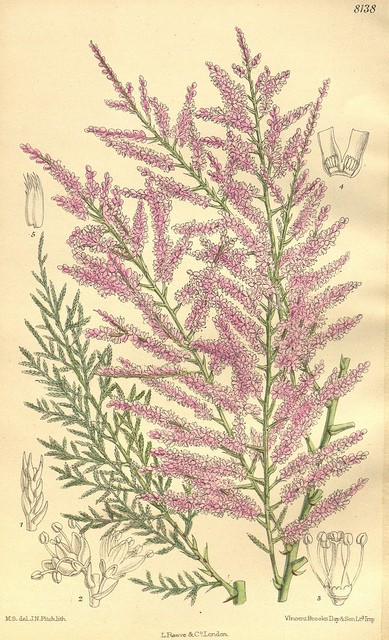
Tamaris pentandra or chinensis – botanical illustration
Tamarix produce with age massive, gnarled trunks, often leaning horizontally and divided near ground level, reaching 3 to 5 m in every direction. They have high longevity, which explains trunks sometimes split, hollow and covered with thick, scaly dark bark that continues to send out thin young shoots directly from trunk. Young bark is beige marked by lenticels, sometimes dark brown‑violet as in T. tetrandra, offering a pretty contrast with grey‑green or bluish‑green foliage. Alternate leaves are scales 1–2 millimetres long arranged all around the highly ramified stems, resembling twigs of cypress or Juniperus. Leaves bear glands that excrete salt absorbed by roots in saline medium.
Depending on species, flowering takes place in spring on wood formed the previous year and before leafing, or in summer on new shoots. Tamarix gallica begins to flower on bare wood and continues its display on leafy wood. The tiny 4‑petalled flowers, gathered in clusters of spikes more or less dense, almost completely cover the twig in spring‑flowering species, forming a light cloud of pink of varying intensity, with variations in cluster length and overall weeping habit. Hermaphrodite flowers present 4 or 5 stamens, which allows, for example, distinguishing species tetrandra (4) and pentandra (5), and are insect‑pollinated. Fruits are small blackish capsules.
Flowering twigs of Tamaris can be used in floristry for their airy appearance, much like gypsophila.
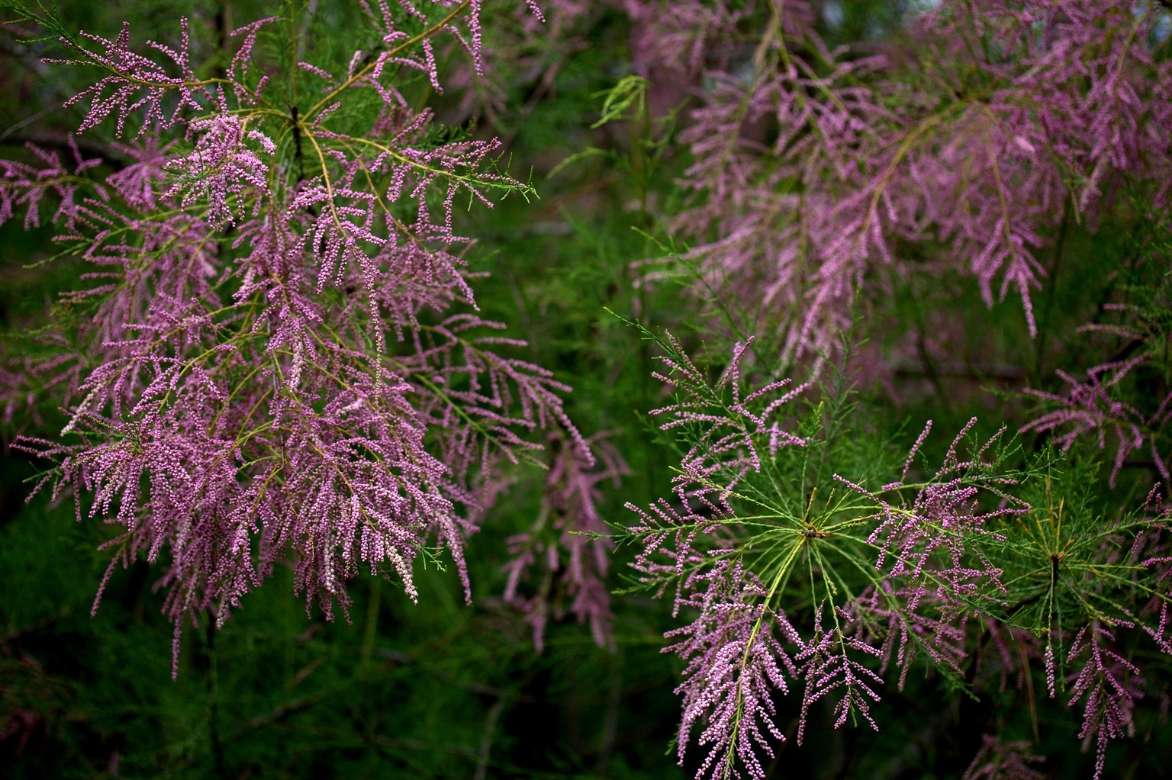
Main tamarisk varieties
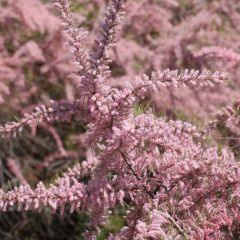
Tamarix parviflora
- Flowering time June, July
- Height at maturity 4,50 m
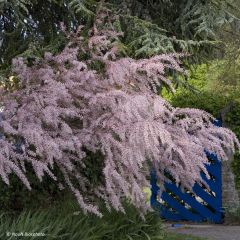
Tamarix tetrandra
- Flowering time June, July
- Height at maturity 3 m
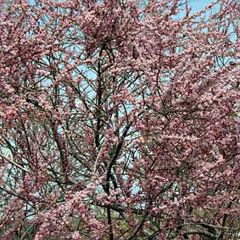
Tamarix ramosissima Pink Cascade
- Flowering time August to October
- Height at maturity 4 m

Tamarix ramosissima Hulsdonk White
- Flowering time June, July
- Height at maturity 5 m
Discover other Tamarix - Tamarisk
View all →Available in 1 sizes
Available in 1 sizes
Available in 1 sizes
Available in 1 sizes
Available in 1 sizes
Available in 3 sizes
Available in 2 sizes
Planting
Where to plant tamarisk?
Plant tamarisk freely in seaside gardens, as a specimen or to form a windbreak hedge made bushy by regular severe pruning. But tamarisk is a tree that also suits any inland garden as a small ornamental tree, with an unusual silhouette, spectacular in flower and which contrasts with more usual plants. Its only drawback is that it will not tolerate growing in a pot, at least once it is a few years old.
As a specimen, allow a space of about 4-5 m so it can develop its more-or-less weeping habit, knowing that even severe pruning will not alter its character. It needs in any case a sunny position. For a hedge, spacing of 1.50 m is recommended.
Tamarisk drives its roots very deep into the soil in search of moisture; it tolerates some limestone (except T. tetrandra) and clay, but prefers free-draining, light, sandy soils, even poor ones provided they are deep.
The species offered are very hardy (down to −45°C for ramosissima), Tamarix tetrandra being the least robust of them, with hardiness to −20°C. However, young plants may have shoots that die back in frost. The plant generally regrows from the stump.
Their fine scaly foliage gives them a strong tolerance to drought. Tamarix parviflora may be the most demanding in that the soil must be deep enough for the roots to find moisture during prolonged dry periods.
When to plant?
Prefer planting in autumn so the root system can establish well before summer drought. If not possible, do it in March–April.
How to plant?
This plant is very easy to grow and requires no maintenance. Plant fairly young specimens so they can develop a deep taproot.
To plant a tamarisk :
- Immerse the root ball in a bucket of water to thoroughly moisten it.
- Loosen the root ball slightly if the roots have started to circle inside the pot.
- Dig a hole three times wider than the root ball and aerate the soil around it with the tines of a digging fork.
- Add a few handfuls of sand and gravel to ensure good drainage around the roots. In heavy soil, opt for planting on a raised mound.
- Set the plant in the planting hole at ground level, without burying the collar.
- Replace the soil and firm lightly.
- Water.
- Don’t hesitate to cut back the young plant to 30 cm above ground to encourage establishment (unless it is already trained as a standard).
Tip: if establishment seems difficult, carry out a second cutback to 10–15 cm above ground in May–June.
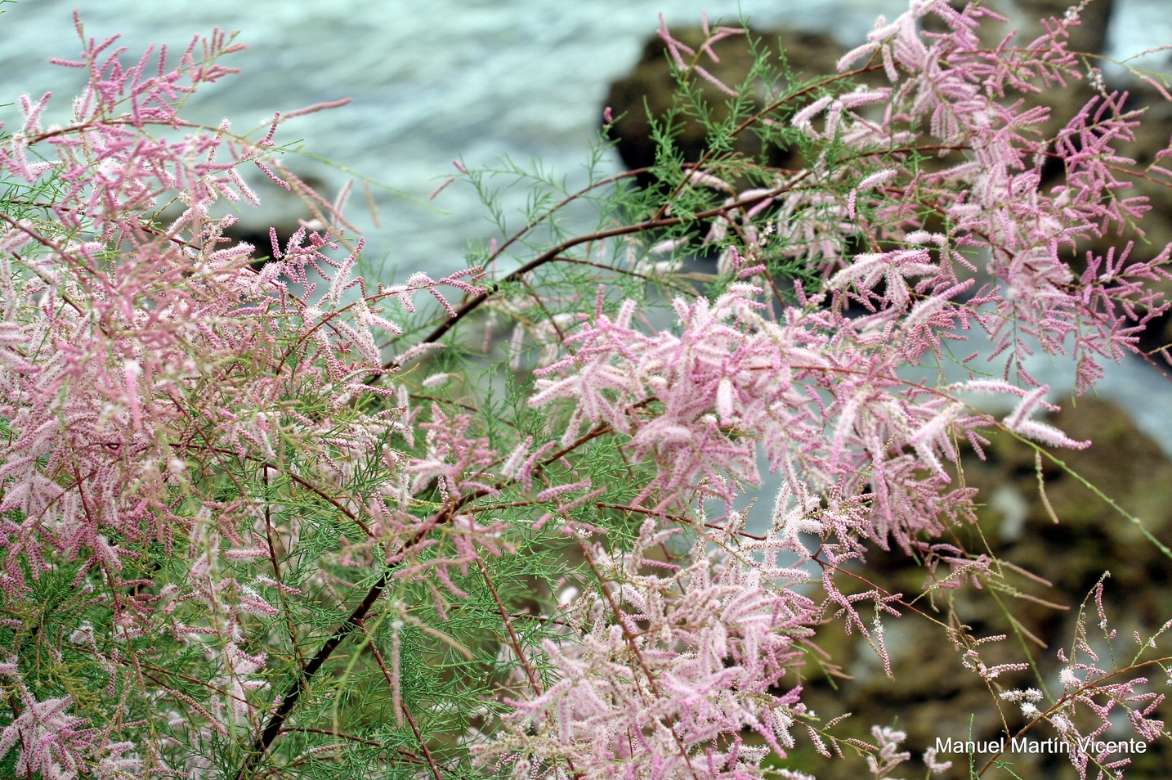
Pruning and care of tamarisks
No need to amend soil. Water copiously during first summer to ensure good deep root growth. Thereafter, watering and fertiliser applications are unnecessary.
Tamaris are generally resistant to disease, notably root rot, but in poorly drained soil insects may attack wood, boring tunnels.
Pruning Tamaris
Pruning increases number of floriferous shoots.
- Carry out pruning just after flowering on spring-flowering Tamaris (tetrandra, chinensis, parviflora): cut shoots back by half or remove completely to encourage regrowth of shoots that will flower next spring.
- For summer-flowering Tamaris (ramosissima), prune shoots that flowered the previous year, at end of winter before growth starts, taking care to leave 2–3 well-formed buds at the base. Remove very dense shoots completely. This species is often pruned as a “pollard”, i.e. cut back to trunk level at about 1.80 m, or on coppice shoots of 5–6 trunks trained to 60 cm above soil, always at same point which produces a swelling at wound-healing zone, about every 3 years.
→ Learn more in our tutorial : How to prune tamaris?

Multiplication
- in spring (April–May), take herbaceous or semi-woody cuttings from young, still-flexible shoots. This method requires good humidity control and a light, free-draining substrate.
- in late summer (August–September), use semi-ripe cuttings, when shoots begin to lignify. They root well if placed under a bright shelter and kept covered to maintain humidity. This period coincides with end of active growth season, when stems have had time to mature but are not yet fully woody (semi-ripe cuttings). Taking cuttings at this time allows them to establish and develop a robust root system before winter, optimising chances of survival and growth the following spring.
- in winter, from November to February, take hardwood cuttings or dry-wood cuttings. This is a hardy, simple method: take well-ripened shoots about 20 cm long and plant them directly in open ground or in pots outdoors.
Propagation by cuttings
Prepare a nursery bed, optionally adding sand to lighten it.
- Take semi-ripe shoots 10–15 cm long, pencil-thick.
- Remove any leaves near base of the cutting.
- Insert them into soil to two-thirds of their length, avoiding cuttings touching one another.
- Water frequently during summer.
- To form a clump, cut back young cuttings the following winter so they form 3–4 trunks.
- Plant Tamaris in spring at final site.
→ Learn more in our tutorial: How to multiply Tamaris by propagation by cuttings?
Uses and companion plants
In hot, dry regions, plant at the foot of your Tamaris with its slightly ghostly silhouette offering light shade, low drought-tolerant plants, evergreen and, if possible, aromatic such as lavender, helianthemums, rosemary, Cistus, santolinas. By the sea, it will keep company in a hedge with Griselinia, Spartium (broom), Atriplex and with plants such as curry plant, sea mallows and Eryngiums.

An example of a seaside hedge combination: Tamaris tetrandra, Hydrangea macrophylla ‘Endless Summer Bloomstar’, Pittosporum tobira and Escallonia ‘Apple Blossom’
You can also play with shapes by placing architectural plants such as yuccas, agaves, cordylines which will contrast with airy lines of the Tamaris…
Near a water feature, plant Tamaris parviflora with a handsome, slightly weeping habit that throws a pale pink veil in spring and colours rusty in autumn. It enjoys deep soil freshness even though it requires free-draining soil. You can create a lovely contrasting scene by planting Tamaris close to a Pleioblastus linearis which forms a large, compact and trailing clump of bamboo with fine culms.
Further reading
Discover our range of tamarisks.
Discover Sophie’s advice sheet: 7 trees for a seaside garden
- Subscribe!
- Contents
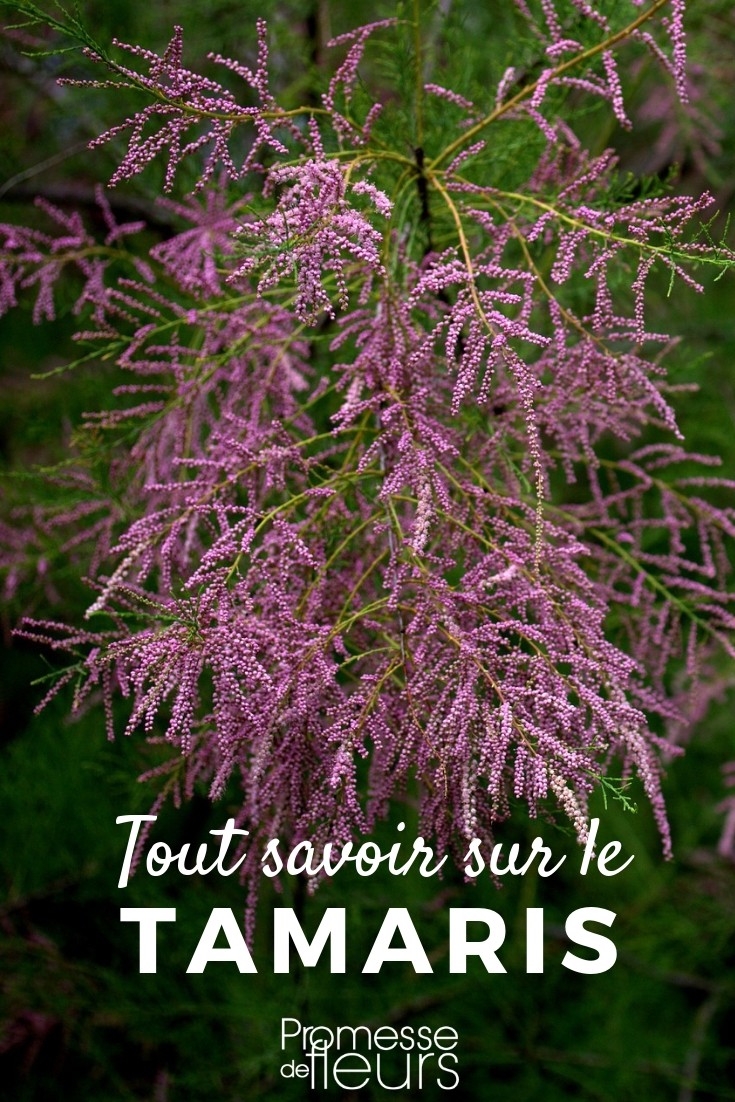
































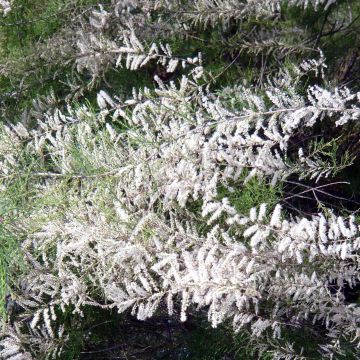
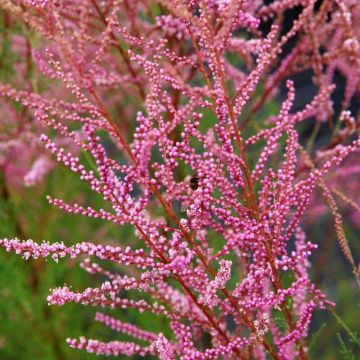
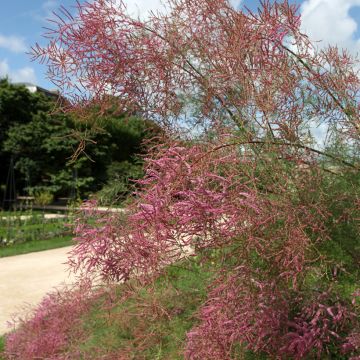
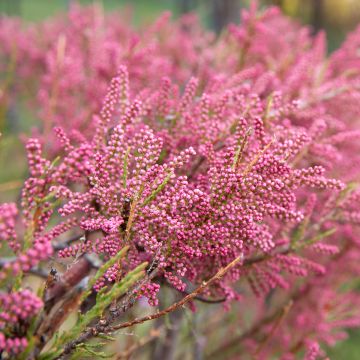


Comments